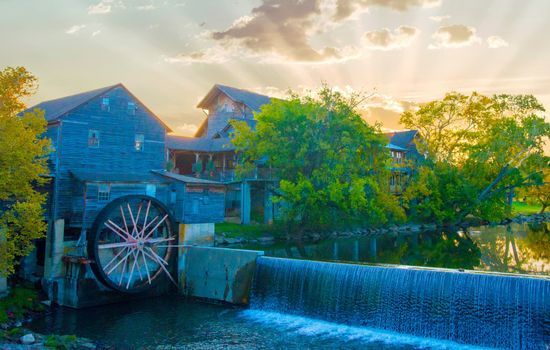The visitor center at Georgian Bay Islands National Park is currently closed for the season and will reopen in 2025; specific hours will be available once the park reopens.
The entrance fee at Georgian Bay Islands National Park is $6.50 for adults, $5.50 for seniors, and $13.50 for groups or families. Youth 17 and under are free. Annual passes and Parks Canada Discovery Passes are also available.
Drive to Honey Harbour (via Highway 400), then access by private boat, water taxi, or guided tour. Water taxis run May–October.
Parking is available in Honey Harbour and surrounding areas, not within the park. Pay parking lots accommodate cars, but not RVs or motorcycles. No overnight parking. Fees apply.
Accessibility & permits
Emergency
- Cell service availability:Partial
Information not accurate?
Help us improve by making a suggestion.
Welcome to Georgian Bay Islands National Park, a pristine sanctuary nestled within the heart of Ontario’s Georgian Bay. Spanning over 14 square kilometers, this collection of 63 islands offers a diverse tapestry of landscapes, from windswept pines to rugged granite shores, all set against the backdrop of the shimmering waters of Lake Huron. Established in 1929, Georgian Bay Islands National Park is not only a haven for outdoor enthusiasts but also a vital sanctuary for diverse ecosystems and wildlife. Home to rare species such as the Eastern Massasauga rattlesnake and the elusive red-headed woodpecker, the park boasts a rich biodiversity.
- Area (km²)
- 8.37
- Annual visitors
- 40 000
- Established year
- 1929
Top 3 Facts about Georgian Bay Islands National Park
The park is home to the greatest diversity of reptiles and amphibians of any Canadian national park, with 33 different species, including the Eastern massasauga rattlesnake, found primarily on Beausoleil Island. This island’s unique landscape features rock barrens in the north and rich hardwood forests in the south, covering an area of 4 square kilometers.
Over 120,000 annual visitors due to accessibility and beauty.
Designated in 1929, one of Canada’s oldest national parks.
Family programs
- Junior Ranger
- Ranger-led Tours
- Self-guided Tours
- Workshops & Hands-on Activities
- Living History & Cultural Demos
- Scavenger Hunts
- Night Sky & Astronomy
- Family Camping & Overnight
- Water-based Adventures
Travel Tips
Plan Ahead
Check regulations, boat access, and ferry schedules. Book water taxis or tours in advance.
Pack Appropriately
Bring sturdy footwear, sun protection, insect repellent, and water. Use GPS/map for trails and navigation.
Respect Wildlife
Wear a PFD when boating, check weather, follow Leave No Trace. Stay alert for rough waters.
Stay Informed
Visit in spring or fall for fewer crowds. Summer is busiest with limited lodging and tours.
Seasons
April–June: Wildflowers, migratory birds, ideal for paddling and birdwatching.
July–August: Peak season, perfect for swimming, boating, hiking, wildlife viewing.
Sept–Nov: Stunning foliage, ideal for hiking and photography. Quieter experience.
Dec–Mar: Offers cross-country skiing, snowshoeing, ice fishing, solitude.
Information not accurate?
Help us improve by making a suggestion.
Where to stay
Frequently Asked Questions
Ready to dive into what Georgian Bay Islands National Park has to offer? Let’s tackle some of the burning questions you might have as you plan your visit!
-
The closest city to Georgian Bay Islands National Park is Toronto, which is about 2 hours south and 166 kilometers away.
-
The Heritage Loop Trail is a good option for kids, as it is a short 0.6 km loop starting at the Cedar Spring Campground, passing through grasslands and a deciduous forest, and features interpretive panels and turtle nesting protection boxes. This trail is easy and informative, making it suitable for families.
-
Yes, you must keep your dog on a leash no longer than 3 meters at all times to ensure the safety of your pet, wildlife, and other visitors. Pets must also be under direct physical control or in suitable confinement. Allowing your pet to chase or harass wildlife is prohibited.
-
Parking is included with the DayTripper shuttle service, but general parking is very limited and only available for national park visitors. For DayTripper users, parking is provided at Honey Harbour.
-
Hike or bike forest trails on Beausoleil Island to scenic lakeside vistas and explore the cultural landscape using the Parks Canada App. Take the DayTripper boat for a half-day visit and enjoy swimming at sandy beaches or picnics with panoramic views. Stay overnight at Cedar Spring Campground, rustic cabins, or oTENTiks, and visit Cave Point for its dramatic geological features and wildlife viewing.


